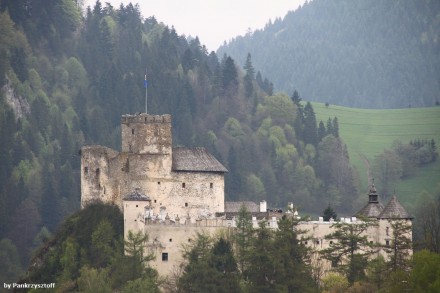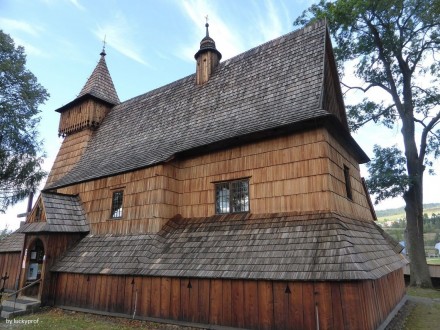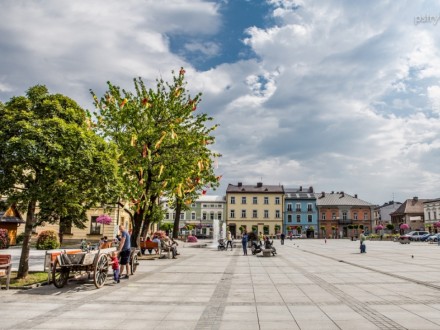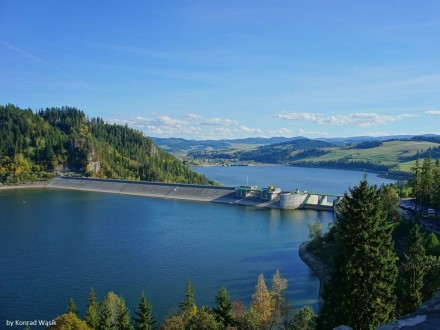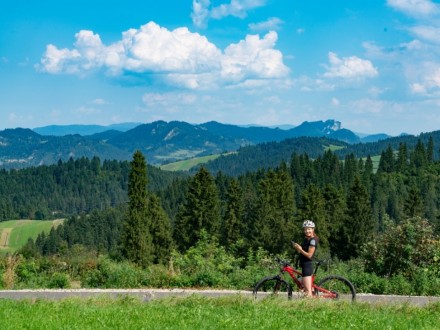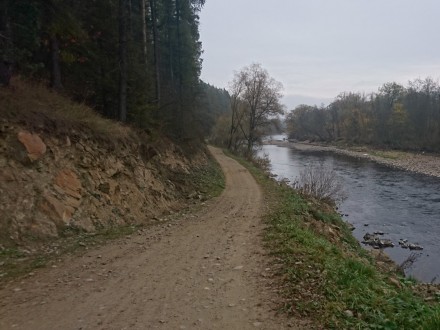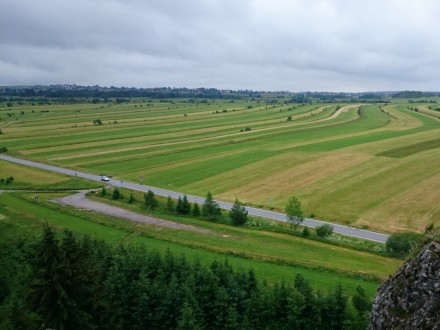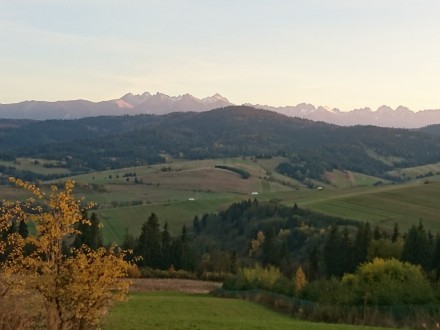To Polish Spisz
Location:
Polska
Category:
medium
Distance:
69 km
Start:
Nowy Targ PKP, Lysá nad Dunajcom, inne (pętla)
End:
Nowy Targ PKP, Lysá nad Dunajcom, inne (pętla)
Gpx:
Rodzaj nawierzchni:
asfaltowe ścieżki rowerowe
drogi publiczne
Rodzaj roweru:
SPD - trasy odpowiednie dla każdego rodzaju roweru, tzn. szosowego, crossowego i górskiego/MTB
TRK - trasy odpowiednie dla roweru crossowego i górskiego/MTB
Niedzica Castle lures us in with the legend of the lost Inca gold, but there are many other reasons to see the Polish part of Spiš - the smallest geographic region of Poland. Original culture, dialect, cuisine, and history, but also the unique nature, landscapes, and… silence. Uniqueness and authenticity. The quiet route along Dunajec, the mountains overlooking the lakes, or the path running around the fells, hills, and fantastic rock formations. Simply, a must-see!
Notes:Suitable for older children on the bikesOptional sightseeing of Niedzica Castle - approx. 2h
Main attractions of the route:
Nowy Targ: as new as the Wawel Royal Castle or the Pont Neuf in Paris. The capital of Podhale, or simply - a city.Velo Dunajec: next to the Route around the Tatras, you will find a second biking highway of the Podtatrze region. Who doesn’t like riding along the river, listening to its calming sounds?Church in Dębina: a wooden masterpiece, built over half a millennium ago. Moreover, thrice as old orchestral bells. UNESCO listed.Lake Czorsztynskie: mountains and lakes always form a picturesque connection. It’s no different this time.Niedzica Castle: an amazing stronghold protecting… the Hungarian border throughout the years. Add to it the Inca gold - that’s the history of Spiš.Sromowieckie Lake: a smaller brother of Czorsztyńskie Lake, however, not less ambitious when it comes to the views.Dursztyn area: one of a few villages, where not so long ago all roads used to end. Unrivaled views on the roof of Polish Spiš.Spiš buildings: parallel streets, barns arranged in neat rows, and the swallowtail shaped church tower.Bór na Czerwonem: unique nature of peatlands just outside the city.
Description:We start the trip at Nowy Targ’s railway station, from where we go east. Through the market square, we will get to the right bank of Dunajec. The next 10 km of the route follow the path of Velo Dunajec, along the river which patiently flows among the southern slopes of the Gorce mountains. This trail was unfamiliar and impassable, until recently. It allows you to unwind, far from the city noise. We get to Dębno, a small village on the verge of Podhale, famous in Poland due to its beautiful small wooden church. The amazing polychromy remembers the times of the Jagiellonian dynasty.
Behind Białka, you are welcomed by Polish Spiš. In Frydman, you will easily observe the characteristic urban layout of the area - spindly main square, with a church in the middle of it, its tower crowned with a swallowtail shaped roof, pens along the streets, and behind them a neat row of barns. The second street from the square (usually Ogrodowa Street) allows you to see this architectural attraction. In Frydman, we also recommend spending some time at the lake.
The route guides you uphill, through Falsztyn, to Niedzica Castle. The castle used to protect the border river crossing on Dunajec and it served as a meeting spot for Polish and Hungarian kings. There is an interesting and unsolved story connected to the Inca gold, which can still lie somewhere within the Castle. The stronghold is also worth visiting due to its picturesque views over the lake. In the summer, you can go on a cruise on Czorsztynskie Lake.
From the Castle, we go down, along the smaller Sromowickie Lake, all the way to Polana Sosny. The enthusiasts of shopping on the Slovakian side of the border can go a few hundred metres further, to Lysá by the Dunajec river. We recommend having a bite before continuing the trip.
The route goes uphill, first mildly, just to go sharply up behind Łapsze, reminding us that the Pieniny Klippen Belt has its slopes as steep as the slopes in the Tatras. However, the prize is worth the price.
The path leads us to Dursztyn, formerly the smallest and the poorest village of the Polish Spiš. The lack of riches is balanced by the richness of the landscapes: Tatra mountains, Pieniny, Gorce, and Babia Góra!
The arduous ascent is rewarded by an amazing long downhill path all the way to Krempachy, behind which we go through Białka and… we are still in Spiš.
Yes, Nowa Biała used to be located on the other bank of the Białka river, however, due to an enormous storm and flood, the river changed its course, leaving the village on the other side. The archeology fans will be intrigued by the neighbouring Cave in Obłazowa, where an Archeological Park is planned be created.
The next part is the almost flat Nowy Targ Basin, with the “Pieniny hiccup” in the form of Cisowa and Grzebieniowa Rocks. Once we go past them, we are back in Podhale.
Through Gronków, we get to Bór na Czerwonem reserve, which we will notice due to the change to the gravel path. The reserve protects the peatland areas, the natural reservoirs (“sponges”), characteristic of the Orava-Nowy Targ Basin.
After crossing the river over Dunajec, we go back to Nowy Targ, where our trip comes to an end.
Project’s Partners



















Portal Co-Financed By The European Union From The European Regional Development Fund Under
The Interreg V-A Pl-Sk Cross-Border Cooperation Program 2014-2020
Portal modernization co-financed by the Ministry of Development

